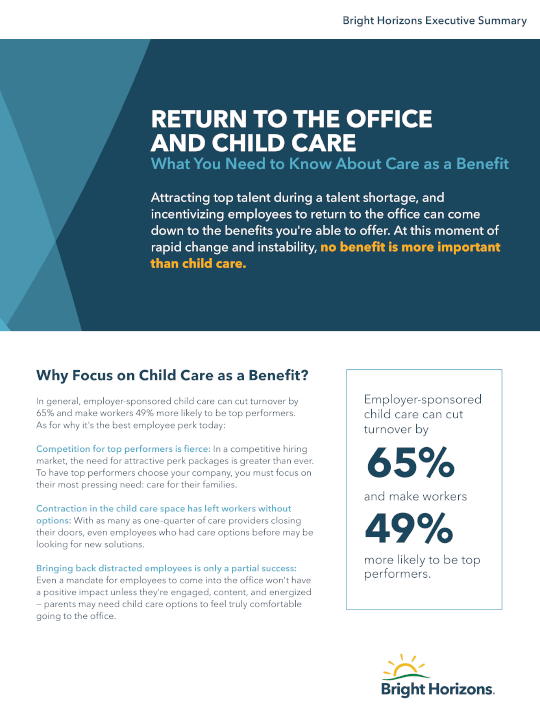Recently, the New Yorker did an exhaustive assessment of work after the pandemic.
“Twenty-seven percent of the American workforce will be remote in 2021,” reports the magazine.
It sounds like a burgeoning endorsement of the work-from-home era. But the flipside of that statistic is what it doesn’t say: that 73% – the vast majority – will be expected to be back in offices.
That may be a little cart before horse when you think of the number of parents who have to be factored in.
Why is that an issue?
Parents are a large demographic: Estimates put employees with children at roughly a third of the workforce.
They’re in key positions: Brookings calls parents at least 20% of every industry.
Many are on their own: “70%—or 23.5 million working parents—do not have any potential caregivers,” reports Brookings, “and their return to work will likely be dependent on the reopening of child care programs and schools.”
They can’t go to an office without child care: For all the arguments about child care, there’s one unequivocal fact: “You can’t leave a 6-year-old at home by themselves,” a human resources executive told the Wall Street Journal.
They can’t work at home without it either: Children on Zoom calls and parents meeting from bedroom closets are just a few of the illustrations of why WFH is not a replacement for child care. “Having to adjust to working from home with the kids was not trivial,” reported one working parent, “and it wasn't always easy to get decent stretches of efficient, uninterrupted work."
If they’re looking for child care, they’ll likely have a hard time finding it: “Half of all child care centers,” reports the Hechinger Report, “could close forever.” So a scarce resource before the pandemic could become even harder to find.
They’re leaving jobs: If productivity seems like the only issue, it isn’t. There’s also a real threat of turnover, and it’s already happening. “Coronavirus,” reports CNBC, “caused 40% of parents to change their job situation.” It’s a big risk for a large group of employees (see “a third of the workforce,” above).
For employers looking toward the post-pandemic era, all of the above is an awakening; that parents are essential; and that child care is part of the recovery.
“Coronavirus,” wrote the Boston Globe in a pointed headline earlier this year, “is making Corporate America realize that child care isn’t someone else’s problem.”
Live Webinar: COVID-19 & Child Care in 2021
Join this event to learn about the challenges facing working parents, the benefits employers should consider, and how to choose a strategy that best fits your culture, workforce, and budget.






